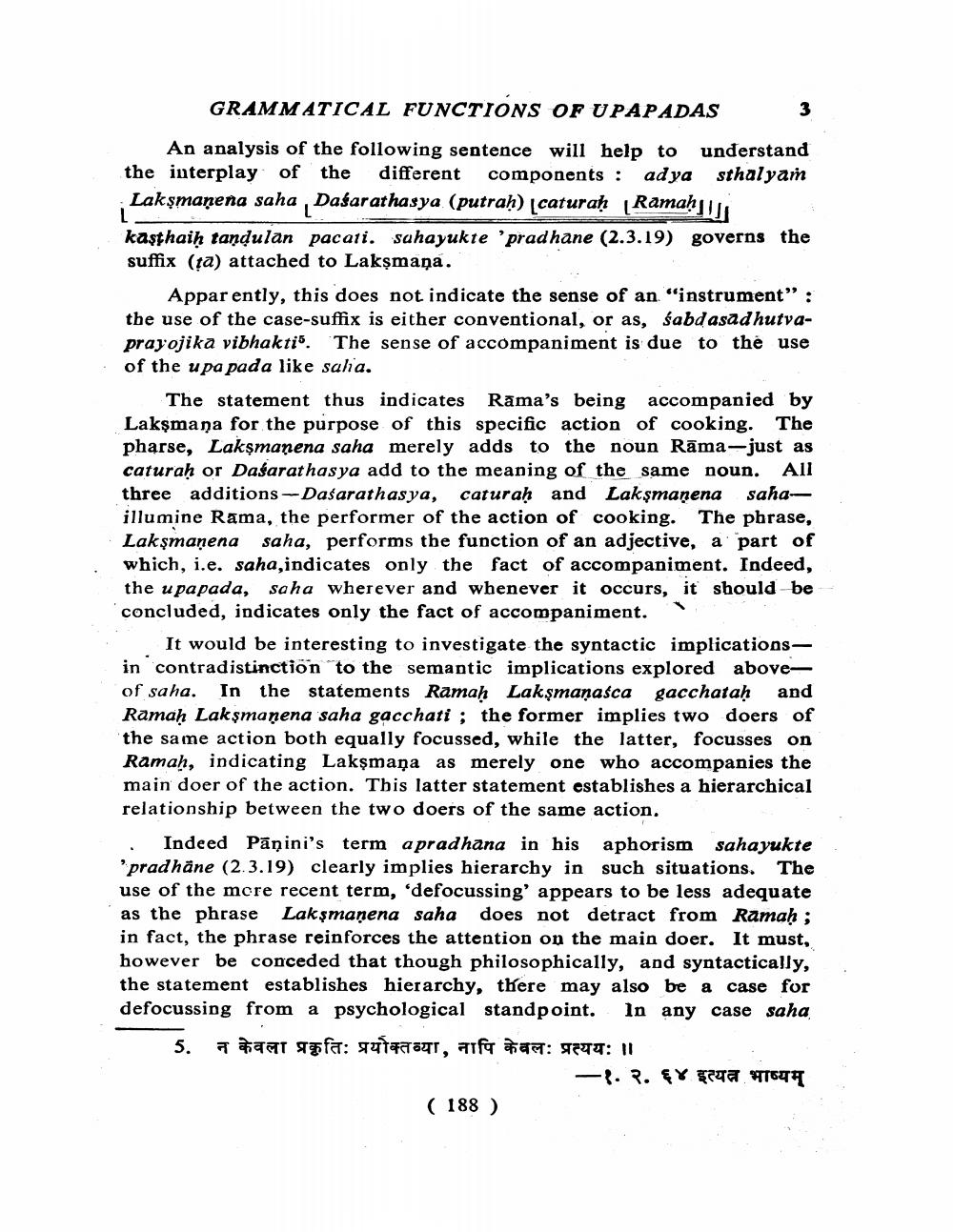________________
GRAMMATICAL FUNCTIONS OF UPAPADAS 3 An analysis of the following sentence will help to understand the interplay of the different components : ad ya sthalyan
Lakşmaņena saha , Dasarathasya (putraḥ) [caturaḥ Ramahli kaşthaih tandulan pacati. sahayukte 'pradhane (2.3.19) governs the suffix (ta) attached to Lakşmaņa.
Apparently, this does not indicate the sense of an "instrument": the use of the case-suffix is either conventional, or as, sabdasad hutvaprayojika vibhaktis. The sense of accompaniment is due to the use of the upa pada like saha.
The statement thus indicates Rāma's being accompanied by Lakşmaņa for the purpose of this specific action of cooking. The pharse, Lakşmanena saha merely adds to the noun Rāma-just as caturah or Dasarathasya add to the meaning of the same noun. All three additions-Dasarathasya, caturaḥ and Lakşmaņena sahaillumine Rama, the performer of the action of cooking. The phrase, Lakşmaņena saha, performs the function of an adjective, a part of which, i.e. saha, indicates only the fact of accompaniment. Indeed, the u papada, saha wherever and whenever it occurs, it should be concluded, indicates only the fact of accompaniment.
It would be interesting to investigate the syntactic implicationsin contradistinction to the semantic implications explored aboveof saha. In the statements Ramah Lakşmaņasca gacchatah and Ramah Lakşmaņena saha gacchati ; the former implies two doers of the same action both equally focussed, while the latter, focusses on Ramah, indicating Lakşmaņa as merely one who accompanies the main doer of the action. This latter statement establishes a hierarchical relationship between the two doers of the same action. . Indeed Pāņini's term a pradhana in his aphorism sahayukte 'pradhäne (2.3.19) clearly implies hierarchy in such situations. The use of the more recent term, 'defocussing' appears to be less adequate as the phrase Lakşmaņena saha does not detract from Ramaḥ; in fact, the phrase reinforces the attention on the main doer. It must, however be conceded that though philosophically, and syntactically, the statement establishes hierarchy, there may also be a case for defocussing from a psychological standpoint. In any case saha 5. Faqat Tafa: qutar, afTat: TTT: 11
-4. . Ex geta 97769 ( 188 )




